
How to Set Up and Optimize Webflow Stripe Integration for Your Website
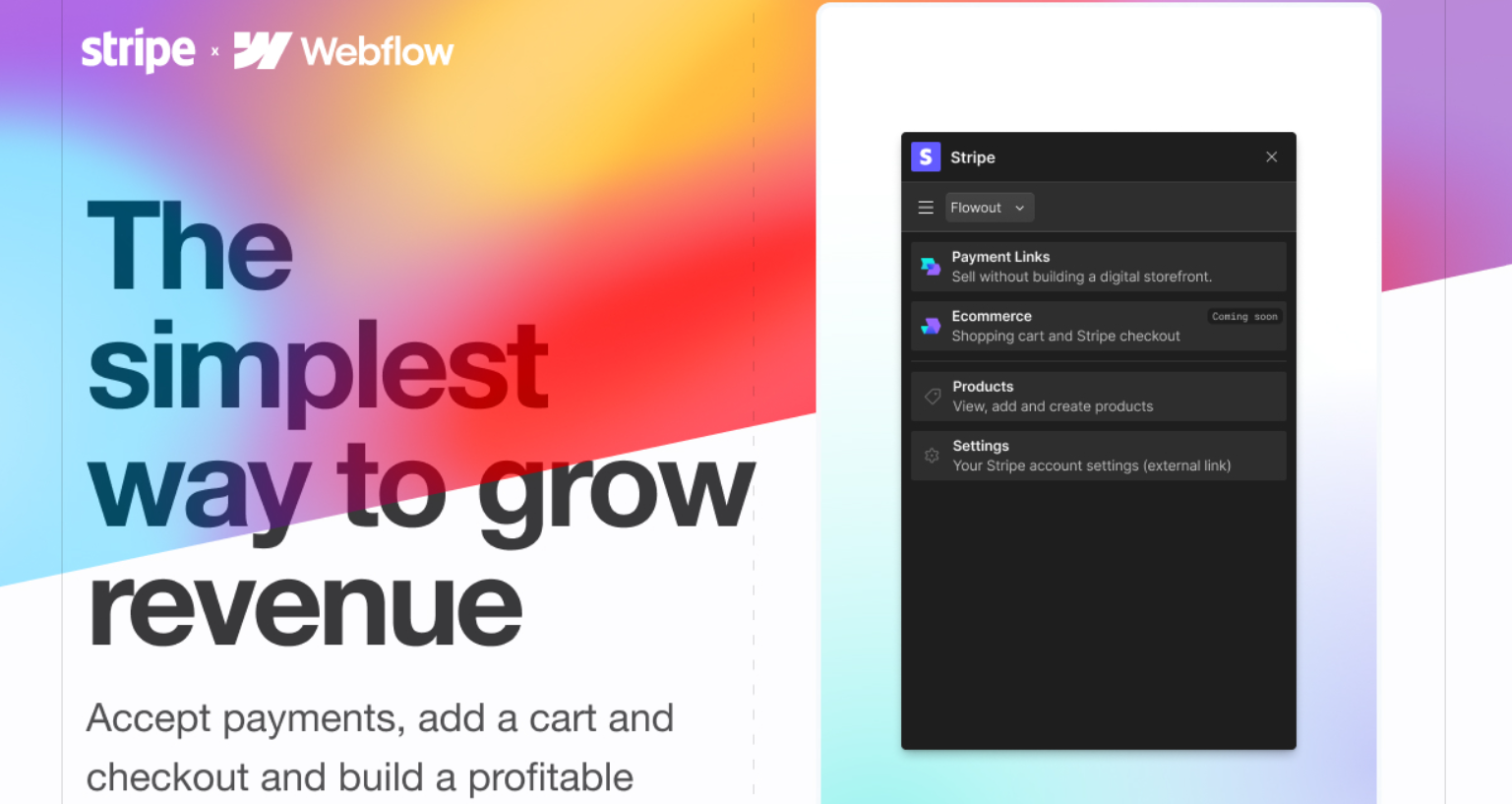
Source: Image
Webflow has become one of the go-to tools for building beautiful, flexible websites in the age of no-code web design and commerce platforms. But designing a visually polished site is only part of the equation; you’ll often need to accept payments, whether for digital goods, services, or subscriptions. That’s where Webflow Stripe Integration comes in, not just as a tool, but as the bridge that turns browsers into buyers and design into revenue.
But this isn’t just another “how-to.” We’re diving deep into real-world use cases, common pitfalls, and how professional Webflow Stripe Integration Services can elevate your workflow. You’ll discover how to connect Stripe securely, generate a payment link, and build a conversion-focused Webflow integration strategy that’s future-proof.
So if you’ve ever asked, “How do I use Stripe on my Webflow site?” You’re in the right place.
Let’s explore how to integrate Stripe with Webflow the right way for smart, scalable, and built to grow with your business.
Why Choose Stripe Integration for Webflow?
If you're looking for a reliable and scalable payment solution, Stripe with Webflow is one of the top options. Stripe integration supports global payments, subscriptions, and one-time purchases, all while keeping your users on your branded Webflow site.
What is Stripe?
Stripe is a globally recognized payment gateway that allows businesses to accept payments online easily. It supports credit/debit cards, Apple Pay, Google Pay, and various local payment methods, making it versatile for global customers.
What is Webflow?
Webflow is a no-code website builder that empowers users to create custom websites with advanced functionality, without touching a line of code. For e-commerce, Webflow offers built-in capabilities for product management, checkout, and cart experiences.

Source: Image
The Power of Stripe and Webflow Integration
The Webflow Stripe integration allows you to connect Stripe as your payment processor, enabling real-time payments directly on your Webflow site. This means customers can complete purchases without being redirected, increasing conversion rates and providing a professional checkout experience.
Some benefits of this Stripe integration include:
- Secure, PCI-compliant payment processing
- Multiple currency support
- Seamless checkout on your own domain
- Recurring billing for subscriptions
- Advanced reporting and fraud protection
Why Businesses Choose Webflow Stripe Integration
- No-code ecommerce: Perfect for non-developers who want to run an online store.
- Custom checkout experiences: Easily design a branded checkout experience.
- Efficient payment process: Stripe handles everything from card validation to compliance.
- Multiple currency support: Sell globally with confidence.
- Scalability: Whether you're selling one product or 10,000, this integration scales with you.
How to Set Up Webflow Stripe Integration
The beauty of the Stripe with Webflow ecosystem is that there’s more than one way to achieve the integration, accommodating different business models and technical comfort levels. Now let’s get into the details of the Webflow Stripe setup process. There are a few different ways you can connect Stripe to Webflow, depending on your needs.

Source: Image
Step 1: Create a Stripe Account
First things first, you need a Stripe account. Visit stripe.com and sign up. Make sure you verify your identity and business details to unlock full payment processing capabilities.
Step 2: Use Webflow’s Native Ecommerce + Stripe Integration (The Direct Path)
If you’re using Webflow’s built-in ecommerce features, integrating Stripe is incredibly straightforward.
- Go to your Webflow Dashboard
- Click on the site you want to integrate
- Navigate to Ecommerce > Payments
- Select Connect Stripe
- Log in with your Stripe account and authorize access
Once connected, you can immediately begin accepting payments through your Webflow store using Stripe.
Tip: Always test your checkout process in test mode before going live.
Other Methods to Integrate Stripe with Webflow
What if you're not using Webflow’s ecommerce feature but still want to collect payments? You have options.
Using Stripe Payment Links (The No-Code Shortcut)
Stripe allows you to generate payment links for products or services. You can embed these directly into your Webflow site using buttons or text links.
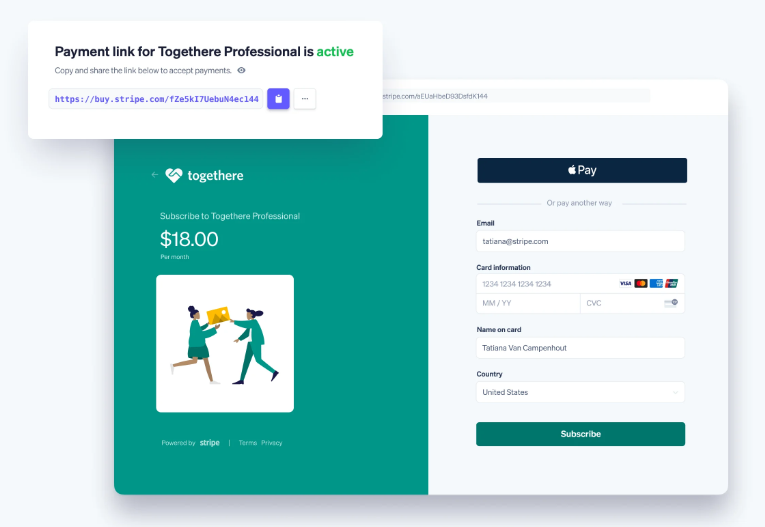
Source: Image
How to do it:
- In your Stripe dashboard, go to Payments > Payment Links
- Create a new payment link for a product or subscription
- Copy the URL
- In Webflow, add a button or link block and paste the Stripe link
This is perfect for one-off payments, donations, or even recurring services.
Embed Stripe Checkout via Custom Code (For Memberships and Dynamic Pricing)
For more control, you can embed Stripe Checkout using custom HTML and JavaScript.
Here’s how to integrate Stripe with Webflow manually:
- Create a product or price in your Stripe dashboard
- Use Stripe’s API or Checkout session code to generate a payment link
- Embed the code snippet into an HTML Embed block in Webflow
Note: This method may require developer assistance or access to backend tools like Zapier, Make, or Firebase for session handling.
Advanced Webflow Stripe Integration Services
If your needs go beyond simple payment collection, you may want to explore professional Webflow Stripe Integration Services.
These services often include:
- Custom checkout pages
- Subscription management
- Webhook integrations for email notifications or CRM sync
- Multi-product handling
- Conditional logic and pricing
Agencies or freelancers offering these services can help integrate Stripe with Webflow in more complex and scalable ways.
Deep Dive: Mastering the Payment Process
Regardless of which Stripe with Webflow method you choose, understanding the underlying payment process is key to a successful launch. When a customer clicks a 'Pay Now' or 'Subscribe' button:
A. Security and PCI Compliance
The primary advantage of using Stripe is that it handles PCI (Payment Card Industry) compliance. For both the native Ecommerce and the Payment Links methods, the customer's sensitive card data never touches your Webflow site. It is entered directly into Stripe's secure, certified environment. This greatly reduces your liability and the complex requirements of data security.
B. Handling Subscription Payments
For recurring revenue, Stripe’s subscription features are essential.
Native Ecommerce: The Webflow Ecommerce platform supports recurring billing for digital products and services. You configure the subscription logic (e.g., monthly price) within the Webflow product settings, and Stripe manages the billing cycles, failed payment notifications, and renewals automatically.
Payment Links/Custom: Using a Stripe Payment Link in subscription mode is the simplest way to sell recurring plans outside of native Ecommerce. For full control, a custom integration via a service like Memberstack allows you to use Stripe to gate content on your Webflow site, creating protected areas only accessible to paying subscribers.
C. Webhooks and Automation
Webhooks are crucial for advanced automation and are the nervous system of a sophisticated stripe integration. A webhook is an automatic notification that Stripe sends to your application whenever a specific event occurs (e.g., payment_intent.succeeded or customer.subscription.deleted).
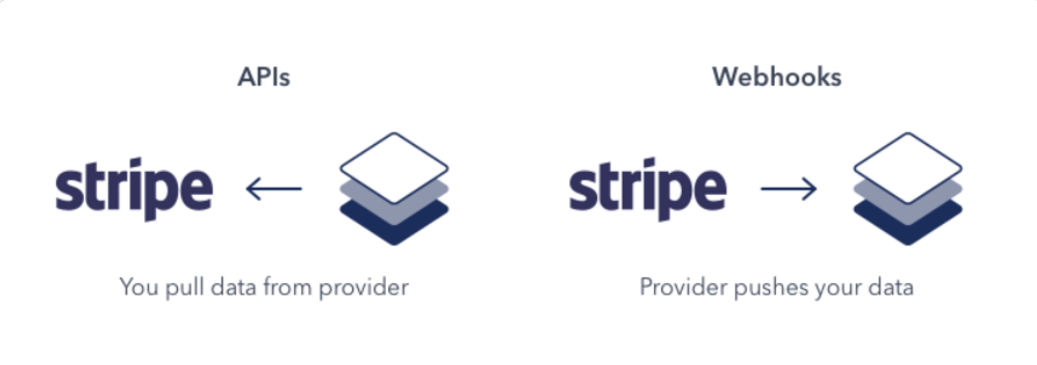
Source : Image
Automation: By capturing these events using a tool like Zapier or Make, you can automatically trigger actions on your Webflow site. For example, a successful payment (a webhook event) could automatically create a new item in your Webflow CMS (the action) or send a custom welcome email. This allows for powerful custom workflows and business logic.
Best Practices for a Successful Webflow Stripe Integration
Successfully connecting Stripe and Webflow goes beyond simply making the button work. Implementing these best practices will optimize your conversion rates and reduce support headaches.
1. Rigorous Testing is Non-Negotiable
Before going live, you must test the entire payment process from the customer's perspective.
- Use Stripe's Test Mode: Every Stripe account comes with a "Test Mode." Use the dummy card numbers provided by Stripe to simulate successful, failed, and authentication-required transactions.
- Check Redirects: Ensure that after a successful payment, the customer is correctly redirected to your Webflow thank you page, and after a failure, they are routed to an informative error page.
2. Optimize the Checkout Experience
The checkout is the most critical part of your sales funnel.
- Mobile-First Design: The majority of online purchases are made on mobile devices. Ensure your Webflow checkout pages, even the native Ecommerce ones, are perfectly responsive and load quickly.
- Trust Signals: Near the payment form, include trust badges, security logos, and a clear link to your refund/privacy policy. Since Stripe handles the security, highlighting this fact builds customer confidence.
3. Stay Updated and Compliant
The global payments landscape is constantly evolving (e.g., SCA in Europe, new data privacy laws).
- Review Stripe Settings: Periodically check your Stripe account dashboard for any required actions or updates. Stripe often rolls out changes to its API or compliance requirements.
- Audit Webflow Integration Services: If you hire a developer for a custom webflow stripe integration, ensure they are using the latest, most secure version of the Stripe API to prevent vulnerabilities.
Other Best Practices for Webflow Stripe Integration
Now that you're up and running, here are some tips to ensure your Stripe and Webflow setup is optimized for performance and security.
1. Enable SSL on Your Webflow Site
Security is crucial when handling payments. Make sure SSL is enabled:
- Go to Webflow Site Settings
- Navigate to Hosting
- Turn on SSL
This ensures encrypted communication and boosts customer trust.
2. Monitor Transactions and Analytics
Stripe provides detailed analytics and transaction logs in your Stripe account dashboard. Check these regularly to:
- Track sales
- Manage refunds or disputes
- Analyze customer behavior
3. Keep Your Webflow Site Fast
Use optimized images, limit third-party scripts, and leverage Webflow's CDN to ensure your Webflow site loads quickly—even during heavy traffic.
Common Pitfalls and How to Avoid Them
While Stripe integration for Webflow is generally smooth, here are a few common issues:
Problem: Payment not showing up in Stripe
Solution: Ensure you’re in “Live Mode” and have completed the full Stripe onboarding process.
Problem: Checkout button not working
Solution: Double-check your embed code, ensure SSL is enabled, and test with multiple browsers.
Problem: Customers not receiving confirmation
Solution: Set up webhooks in Stripe to trigger email confirmations or integrate with tools like Zapier or Mailchimp.
Final Thoughts
The Webflow Stripe Integration is a powerful way to blend beautiful design with robust payment processing. Whether you’re running an ecommerce store, offering services, or collecting donations, using Stripe with Webflow gives you the tools to grow your business with confidence.
The right Stripe integration for Webflow depends on your business needs. No matter what route you take, integrating Stripe with Webflow gives you the flexibility to run a modern online business beautifully and securely.
Need Help With Webflow Stripe Integration?
Integrating Stripe with Webflow doesn't have to be complicated, but getting it right can make all the difference in your payment flow, customer experience, and conversion rates.
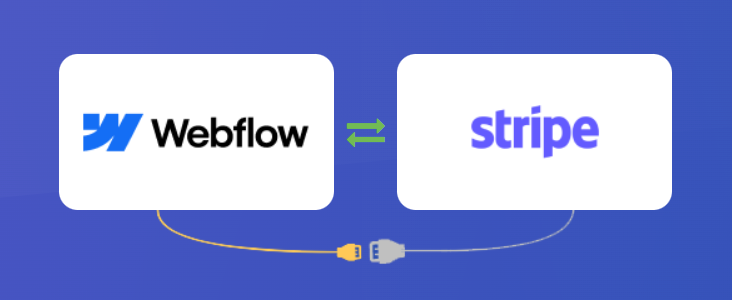
Source: Image
That’s where Alien Design Studios - a certified webflow agency, comes in.
Whether you need:
- A custom Webflow Stripe setup
- Full ecommerce integration
- Branded checkout flows
- Membership systems
- Or end-to-end Webflow Stripe Integration Services
Looking to Connect Stripe and Webflow Without Coding? Our team of no-code and low-code experts can build exactly what you need - fast, secure, and scalable.
Let’s build your next big thing. Contact Alien Design Studios to know more or to book a consultation today.
Subscribe for Industry insights
Get cutting-edge design insights + Free pro
resources just for subscribing!
FAQ
More Insights


Nagar, Vanagaram, Chennai, Tamil
Nadu 600095, India
REGISTERED IN Chennai, INDIA.
"Global Team, Building for the world"





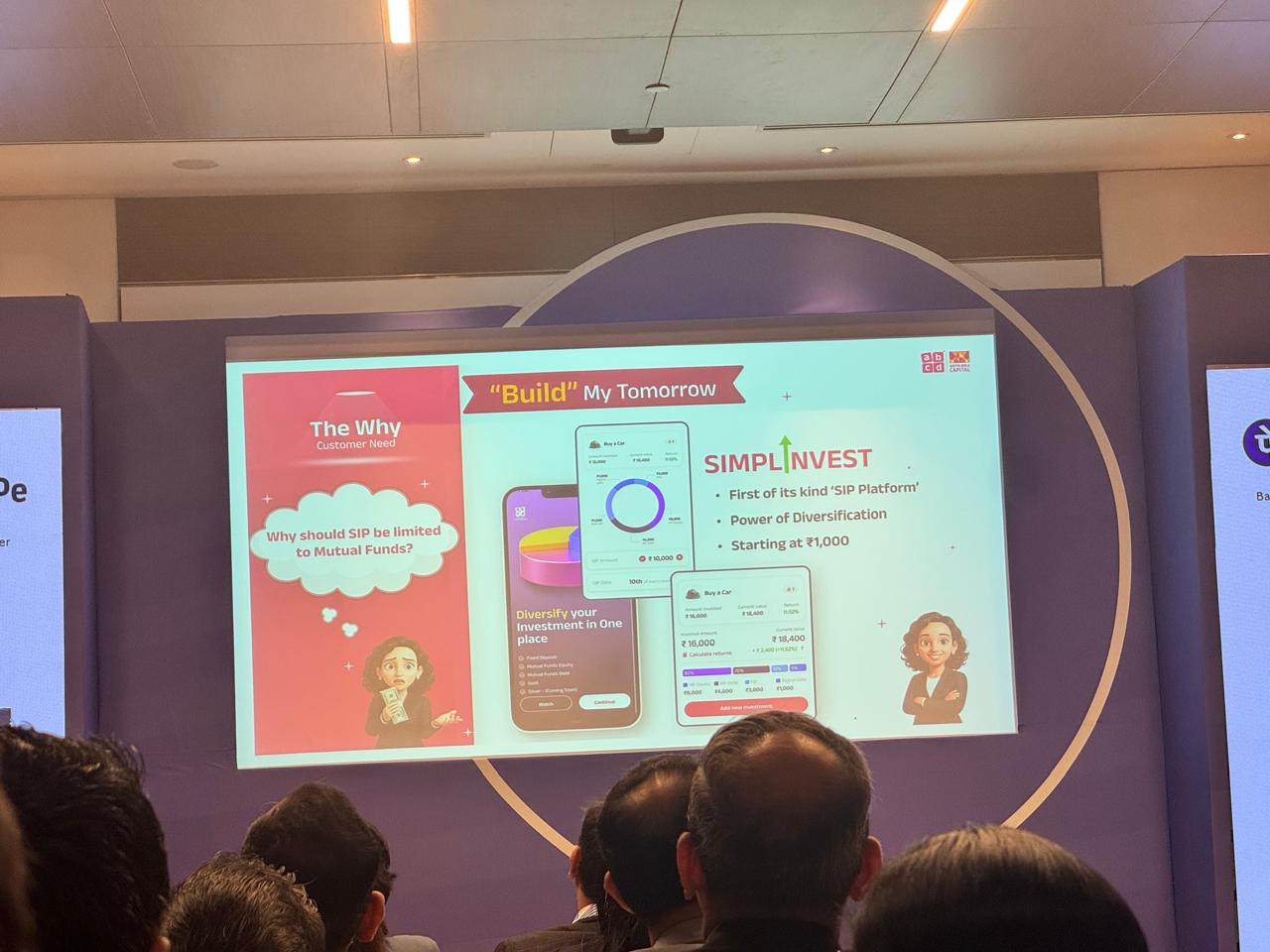







.webp)
.svg)